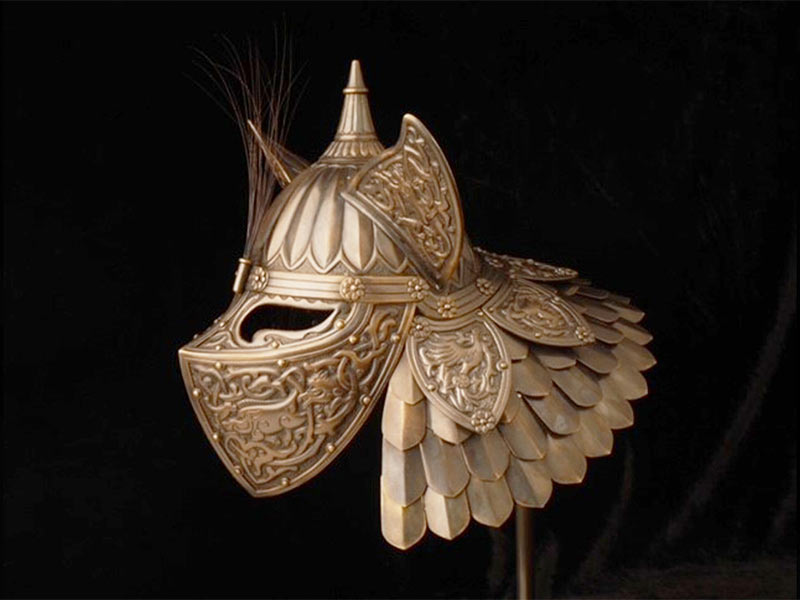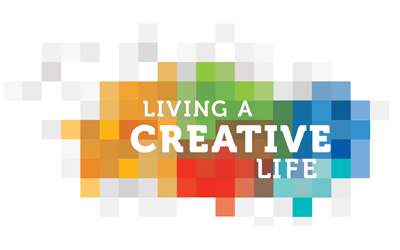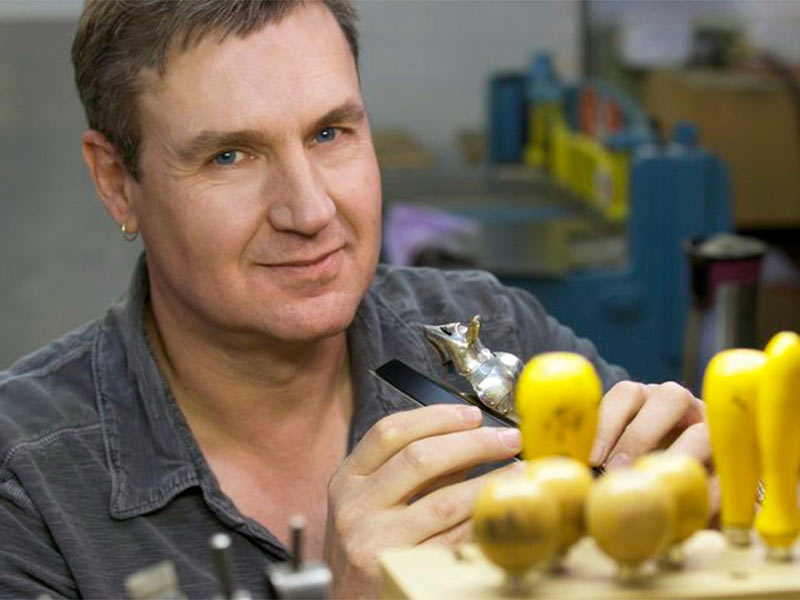Jeff de Boer
Calgary artist goes viral with the help of National Geographic
The mouse armour guy just went viral.
Jeff de Boer — local artist, artisan, teacher, mentor, jeweller, metal worker, public art sculptor and Calgary Arts Development board member — woke up one day in late December to discover his cat and mouse armour, which he’s been creating for decades, had become a thing on Instagram.
A really big thing.
That’s because a mini-documentary film of de Boer detailing how he creates his intricate mouse armour at his Ramsay studio, which he has been doing for 36 years, was featured on National Geographic’s Instagram page as part of a multi-media exploration into this Calgary artist’s weird, intricate, compelling creative life.
The December 2022 exploration of de Boer’s world included a feature story on the National Geographic website with a stunning series of photographs of de Boer’s mouse armour, an interview de Boer did with National Geographic journalist Kristin Romey, and the two-part mini-documentary of de Boer at work in the studio.
“The part 1 video on Instagram has gathered more than 12 million views,” said an email to de Boer from the iconic magazine’s social media director. “The version on TikTok has almost 500K views, both of which are well above our median view rate.”
It’s not as if the mouse armour wasn’t attracting people’s attention before National Geographic came along, but it’s one thing to be a Calgary artist and it’s another thing entirely for a 59-year-old western Canadian artisanal maker to go viral.
And de Boer will take it. “Calgary artists tend not to get this kind of attention,” he says.
The Glenbow
De Boer grew up in Calgary in the 1970s and was introduced to armour as a five-year-old boy, when his mother took him to visit the Glenbow Museum’s armour collection in downtown Calgary. That led to a lifelong creative fascination with the concept of creating armour — only instead of building people-sized armour, de Boer morphed into mouse-sized.
Why mice?
For de Boer, the mouse and cat armour started as a story about underdog artists (mice) trying to survive in a predatory art world (cats), but he concedes these days that each person who views it brings their own perspective to it. And for the record, he’s never tried to actually fit it on a mouse.
“Each person brings their own story to my work,” he said, in the article. “I’m not the author of a story; I’m the maker of artefacts for a yet unrealised story.”

Embracing Social Media
What distinguishes de Boer from many of his creative peers is the enthusiastic way he has incorporated social media into his creative life. Whether on his Facebook page, Twitter feed, on Instagram or elsewhere, de Boer has built a global following from his base in a winter city on the Canadian prairies that no one pays much media attention to as an arts hub.
Through the power of social media, de Boer has built a business out of his creative life, attracting commissions from a clientele that discovered him online — which is also where National Geographic editor and writer Romey discovered the mouse armour. “The digital realm for visual artists is really interesting,” de Boer says. “As an artefact maker, I see no conflict. You’ve got to participate in every media you can — just don’t participate in the junk side of it.”
That embrace of social media allows de Boer to reach audiences around the world for a fraction of what it used to cost artists and galleries — and all the administrators throughout the art infrastructure — to spread the word about an artist’s work. In fact, the economics of art marketing before and after the Internet came along are kind of staggering to consider.
“From 1994 to ’96, I did an exhibition,” de Boer says. “(It contained) 160 works that toured across Western Canada. There was a big show at the Canadian Museum of Craft with a catalogue,” he said. “Photos of everything. They printed 2,500 copies. It cost $90,000.
“I get that (audience) with one click of a (no pun intended) mouse today,” he says. “That’s the difference (between pre-digital and digital).”
Social media changed the game. Not only did he not have to work through the gallery system, but he didn’t have to move to New York or Toronto or another art hub in the hope of being discovered. Digital culture became the metropolis that artists used to think they had to move to and economically survive in.
“I pioneered the idea of the independent visual artist,” de Boer says. “I was told (by gallery owners in the 1990s that) it would be the end of my career.”
Digital Artefacts
He says digital media is simply one more tool in the kit of every independent artist, and a powerful one at that. “What’s the best, most practical way to create a digital artefact?” he asks. “On social media, people who commission my work can follow as I build their work,” he says. “You can share every little detail about how you do it.
“Some artists are reluctant to do that, but I think part of this job is sharing knowledge,” he says. “We’re part of a continuum of sharing knowledge. People love it (to be able to watch). It’s a little bit like playing the piano. You have to learn some new stuff, like how to talk to the camera as you work, but it’s lovely that I’ve been able to develop that.”
All of those elements came together 36 years after he made his first set of armour, when National Geographic featured de Boer and clocked millions and millions of clicks.
How does he live a creative life?
“All I have ever known is that I wanted to be an artist,” he says. “One would think that spending my time in my studio working is the most creative part. I have found that the time spent engaging with the public, collaborating with fellow artists, critiquing and sharing knowledge are the most creative and rewarding times in my life.”
Why does it matter to live a creative life?
“Imagine there was a magic spell that could make creativity disappear. How would our food taste?” he asks. “What music would we hear?
“How many innovations in science, technology and medicine would there be?” he says, continuing. “Every aspect of our lives that we enjoy and take for granted would be gone. Creativity is light and joy in what can be a dark and hostile universe.
“Perhaps,” he says, “that’s the real battle my mice are fighting.”
About the Storytelling Project
The Storytelling Project raises awareness about Calgarians who, by living creative lives, are making Calgary a better city, effecting positive change and enriching others’ lives.
Have a story to share? Email us at submissions@calgaryartsdevelopment.com.

